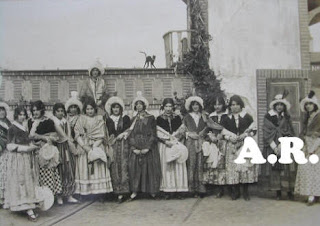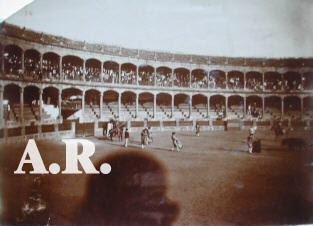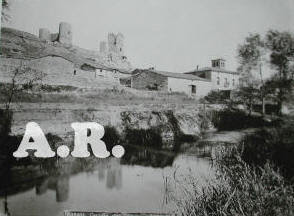Buscar este blog
Blog sobre fotografía antigua y sus fotógrafos. Blog about vintage photography and its photographers. De http://photocollection.alonsorobisco.es. 15 años. Más de 3000 posts. 1 persona.
Entradas
Mostrando entradas de julio, 2008
Fotógrafo Meras. Fotografía antigua Covadonga. Asturias
- Obtener enlace
- X
- Correo electrónico
- Otras aplicaciones
(en) Photographer Brogi. Certosa de Pavia, Italy.
- Obtener enlace
- X
- Correo electrónico
- Otras aplicaciones
Fotógrafo Gicomo Rossetti Certosa di Pavia. Photo Album. 1860
- Obtener enlace
- X
- Correo electrónico
- Otras aplicaciones
Fotógrafo Peinado. Fotografía antigua Gijón. Carnaval
- Obtener enlace
- X
- Correo electrónico
- Otras aplicaciones
Fotógrafo anónimo. Fotografía antigua Galicia. Orense. San Esteban do Rivas de Sil
- Obtener enlace
- X
- Correo electrónico
- Otras aplicaciones
Laboral Centro de Arte. Gijón
- Obtener enlace
- X
- Correo electrónico
- Otras aplicaciones
Fotógrafo José ¿del ?Hoyo. Plaza de Toros de Ronda.
- Obtener enlace
- X
- Correo electrónico
- Otras aplicaciones
Fotógrafo Albert Levy. Fotografía antigua de Cabourg. Francia. Casa
- Obtener enlace
- X
- Correo electrónico
- Otras aplicaciones
Museo del Pueblo de Asturias. Gijon. España
- Obtener enlace
- X
- Correo electrónico
- Otras aplicaciones
Fotografía antigua Burgos. Fotógrafo Vadillo. Coruña del Conde..Vintage photography Spain Coruña del Conde .Archivo Villanueva. Digital archives Eustasio Villanueva Burgos
- Obtener enlace
- X
- Correo electrónico
- Otras aplicaciones
Fotógrafo Nuño. Fotografía de León. Paisanos. Vintage photo Spain León. farmers on a donkey
- Obtener enlace
- X
- Correo electrónico
- Otras aplicaciones









